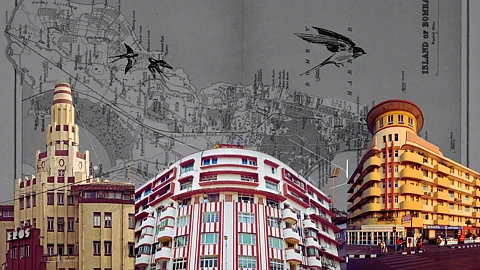
- HOMEGROWN WORLD
- #HGCREATORS
- #HGEXPLORE
- #HGVOICES
- #HGSHOP
- CAREERS
- ABOUT US
- CONTACT US

By all appearances, the Brihanmumbai Municipal Corporation’s new 'Iconic Buildings' policy is a celebration of ambition. It lays out a vision of a future skyline dotted with landmark structures — buildings that break the mould in shape, design, scale, or concept. On the surface, it reads as a gesture toward architectural innovation: a statement that Mumbai, India’s cultural capital, deserves world-class design that reflects its stature. But behind this glossy rhetoric is a near-total blind spot to the city’s most precious resource: its lived heritage.
The policy is a contradiction. It claims to protect and enhance Mumbai’s iconic status by encouraging the construction of “iconic buildings” — defined not by their historical or social significance, but by their physical form and market visibility. Under the draft, any structure with distinctive features, be it in shape, aesthetic, or architectural concept, can qualify for special treatment. These buildings will bypass many of the usual planning norms, enjoy discretionary allotments of additional floor area, and gain exemption from FSI calculations for certain non-inhabitable design elements. In return, they must offer a public plaza and keep at least 40% of their built space accessible to the public, free or otherwise.
On paper, this sounds like a nudge toward more generous and interesting public architecture. In practice, it privileges novelty and spectacle over context and care. “Iconic” here is shorthand for visibility, scale, and photogenic form. A tower with a twisted façade, a building that glows at night, or a structure with a striking atrium may all qualify, even if they sit awkwardly in their neighbourhood, displace long-standing communities, or contribute little beyond branding appeal. What gets rewarded is appearance.
And therein lies the danger. Mumbai’s true icons, the ones with social depth and emotional weight, are not always visible in skyline silhouettes. They are lived-in Art Deco apartments in Shivaji Park and Marine Drive, chawls in Girgaon, temples in Banganga, and neighbourhood eateries that have fed generations. These places are beloved. They are icons in their own right because they have been inhabited, remembered, and passed down. And yet, this new policy excludes them almost entirely. Residential buildings are disqualified. Structures that do not offer public access are disqualified. Heritage, if it is not commodified, is invisible.
In place of this, the policy encourages a cityscape dominated by commercially-driven spectacles. With eligibility thresholds tilted heavily in favour of large developers (those with over 1 million square metres of built projects or Rs. 5,000 crore in annual turnover), the policy is exclusionary. It opens the gates to those who already control the bulk of Mumbai’s real estate story, offering yet another incentive to reshape the city in their image. The token allowance for “renowned architects” to bypass these thresholds feels more like a loophole than a levelling mechanism.
The process is equally flawed. A small committee, appointed by the Municipal Commissioner and accountable to no one but the State Government, is tasked with selecting up to five “iconic” projects each year. There is no defined appeals mechanism, no obligation to disclose scoring criteria, and no ward-level checks. There are no heritage conservationists or environmental experts mandated on the panel. In a city as layered, contested, and climate-vulnerable as Mumbai, such concentration of power and opacity of process should be alarming.
This is a deeply unequal imagination of the city. Public access is framed as a ticketed experience; heritage as a hindrance. Equity is not part of the design vocabulary. The idea that a building must be "iconic" to be valued reproduces a logic of erasure where ordinary, lived spaces are deemed unworthy of care unless reimagined through glass, scale, and capital.
That Mumbai deserves ambitious architecture is not in question. But ambition cannot mean the erasure of memory, nor the sidelining of community. A city as dynamic as Mumbai does not lack creative energy or civic pride. What it lacks is a planning regime that recognises value beyond valuation, beauty beyond form, and progress beyond construction. It needs policies that restore and repurpose, not just rebuild. It needs systems of governance that consult and include, not just pronounce and permit. And it needs to resist the urge to define its future by what looks good in a press release, while the city’s heart continues to crumble behind scaffoldings no one funds.
The window for course correction is narrow but open. Thousands of citizens, architects, and heritage advocates have already voiced their objections. The policy, if it is not withdrawn, must at least be rewritten with humility, with historical awareness, and with deep respect for the lives that make Mumbai iconic, not on paper, but in spirit.
If you enjoyed reading this, here's more from Homegrown:
From Empire To Intimacy: Radhika Surana’s Textile Art Explores The Politics Of Indigo
A Portal To Something New: Shyama Talks Rebirth, Mythology, & Painting Dream Logic
Architecture Meets Emotion Through The Structural Poetics Of Asad Hossen’s Art
